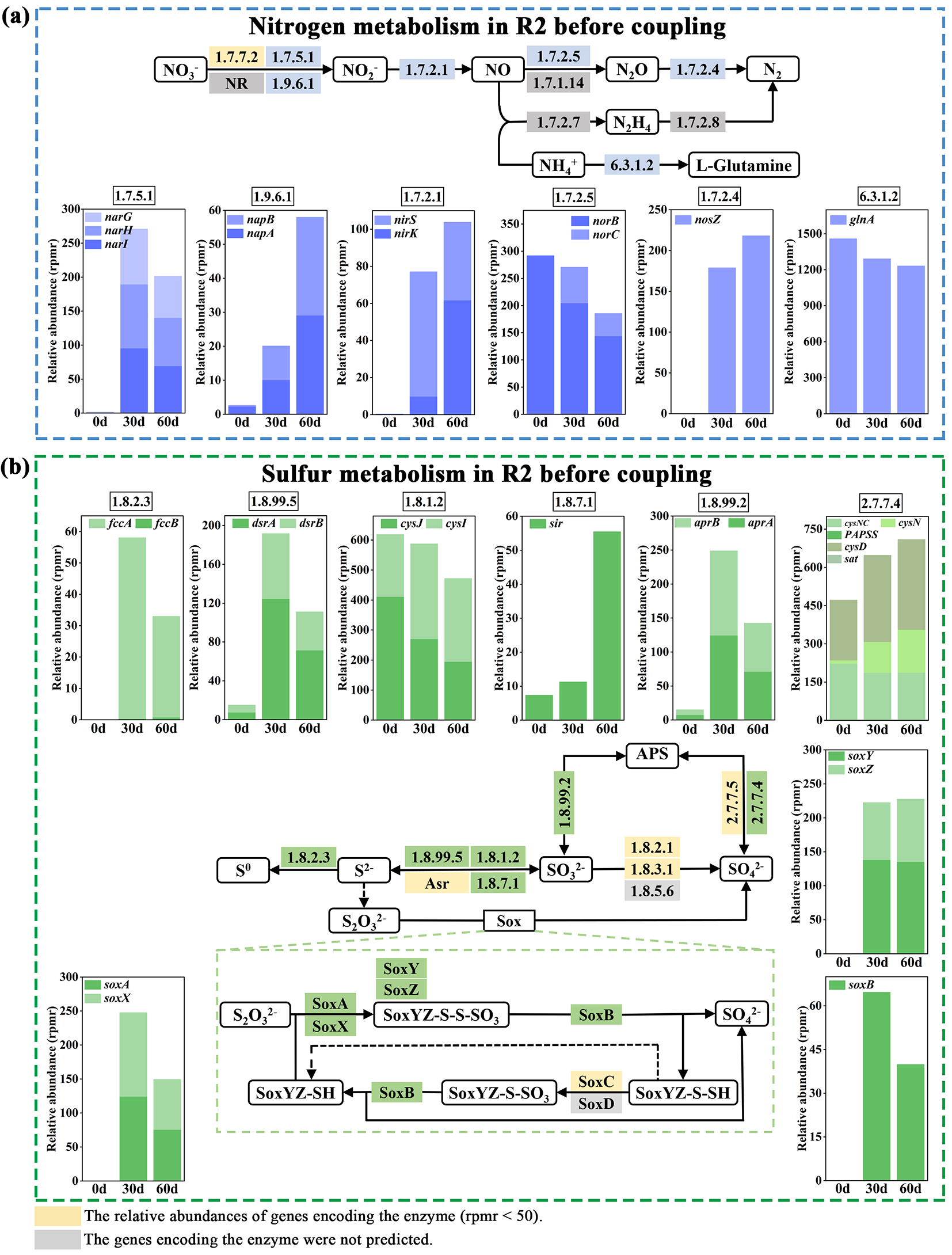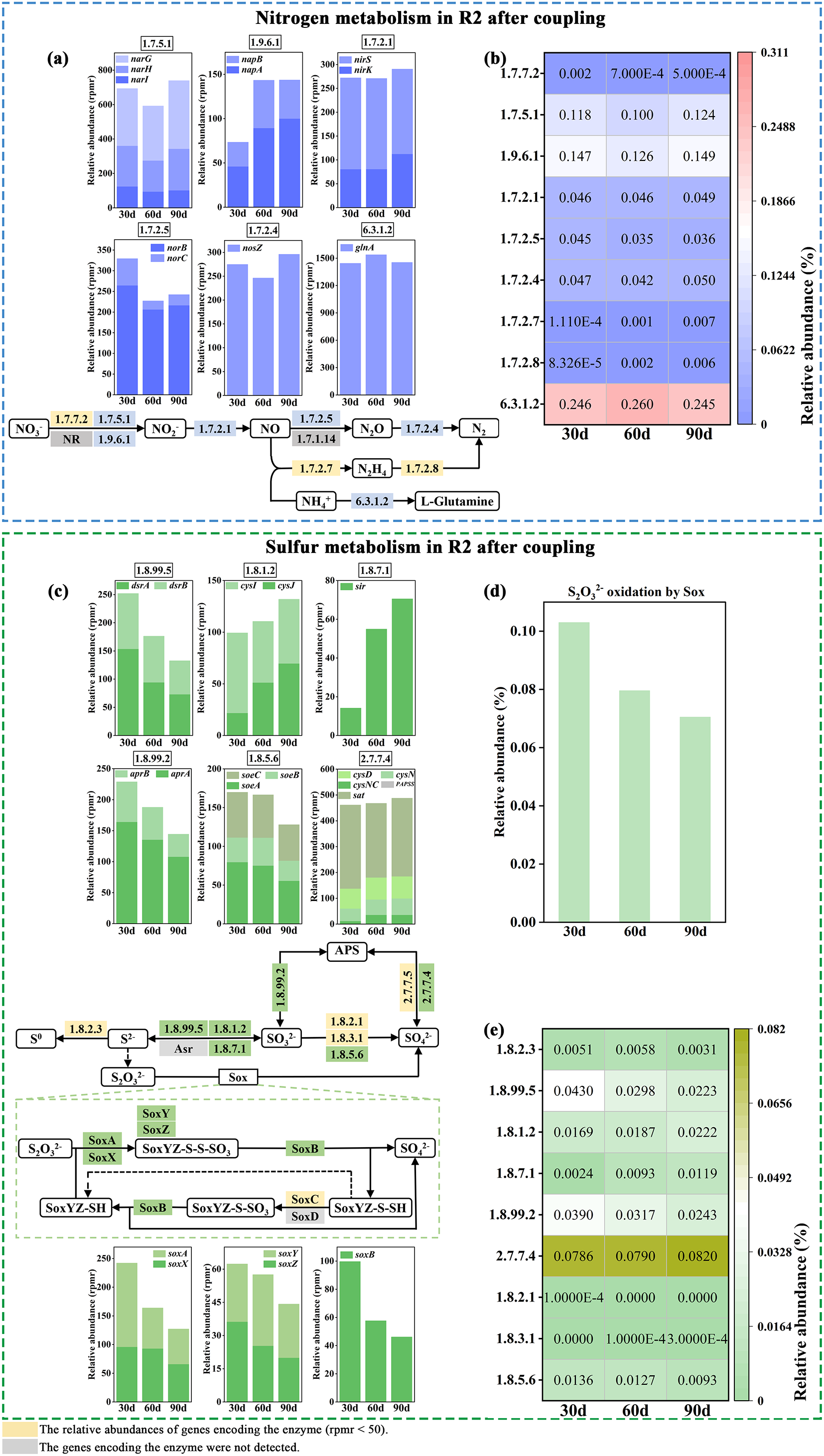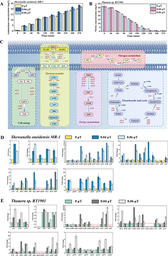An innovative approach for efficient thiocyanate and nitrogen removal from industrial wastewater
Published in Earth & Environment

In the relentless pursuit of environmental sustainability, the innovative approaches to managing industrial wastewater have become more critical than ever. Thiocyanate (SCN-), a pervasive pollutant in industries such as mining, chemical processing, electroplating, and food processing, poses significant ecological and health risks. The traditional treatment methods, which are often not very efficient and cost a lot, haven't been able to effectively deal with the removal of SCN-. The study, detailed in the manuscript "Uncovering pathway and mechanism of simultaneous thiocyanate detoxicity and nitrate removal through anammox and denitrification" brings an environmentally friendly strategies to simultaneously detoxify SCN- and remove nitrate from wastewater.

Figure 1. Nitrogen and sulfur metabolism in R2 before coupling. Relative abundances of genes encoding enzymes in (a) nitrogen metabolic pathway and (b) sulfur metabolic pathway in R2 before coupling. The data were referenced from the KEGG database based on the 16S rRNA gene amplicon sequencing data. The relative abundances of genes were determined by normalizing the gene concentrations and comparing them by using targeted reads per million mapped reads (rpmr).
The study introduced a two-stage coupled system in which Reactor 1 (R1) utilizes anammox to convert ammonium and nitrite into nitrogen gas, known for its low energy consumption and lack of need for organic carbon sources. In Rector 2 (R2), SCN--driven autotrophic denitrification further enhances nitrogen removal by utilizing the nitrate produced in R1 as an electron acceptor. This coupled system achieves a total nitrogen removal efficiency (TNRE) of 92.42±1.98%, significantly higher than that of solo reactors.
The study goes beyond just looking at the increase of TNRE and delves into the microbial mechanisms that drive this process. The research provides a comprehensive analysis of the nitrogen and sulfur metabolic pathways (Figure 1-before coupling; Figure 2-after coupling), offering valuable insights into the microbial mechanisms at play. Furthermore, the analysis of microbial composition revealed that Thiobacillus, particularly Thiobacillus_denitrificans, played a crucial role in SCN- degradation in R2. The degradation pathway of SCN- shifted from the cyanate (CNO) pathway in R2-before coupling to a co-action of CNO and carbonyl sulfide (COS) pathways in R2-after coupling. This shift in degradation pathway suggests an adaptive microbial response to the environmental changes brought about by the coupling of anammox and SCN--driven autotrophic denitrification.

Figure 5. Nitrogen and sulfur metabolism in R2 after coupling. (a) The schematic diagram of nitrogen metabolic pathway and the relative abundances of genes encoding key enzymes. (b) The heatmap of key enzymes associated with nitrogen metabolism. (c) The schematic diagram of sulfur metabolic pathway and the relative abundances of genes responsible for encoding crucial enzymes. (d) The relative abundance of module M00595 (S2O32- oxidation by Sox complex). (e) The heatmap of key enzymes related to sulfur metabolism.
The two-stage coupled system offers a viable strategy for the simultaneous removal of SCN- and nitrogen from wastewater. This system is not only efficient in removing pollutants but also aligns with the increasing demand for environmentally sustainable solutions. It minimizes sludge generation, requires no external organic carbon sources, and eliminates the need for aeration, making it an attractive option for low-carbon nitrogen removal and greenhouse gas emission-free technologies. The importance of this research extends beyond academic interests as it provides a practical solution to address an environmental problem. This study contributes to the development of new strategies for carbon-neutral wastewater treatment and has the potential to significantly reduce the environmental impact of industrial wastewater, protecting ecosystems and bringing us closer to achieving carbon neutrality in wastewater management.
Furthermore, it is necessary to take into account technical, economic, and environmental factors comprehensively in order to ensure the successful application and sustainable development of two-stage coupled systems. To further explore and validate the contribution of two-stage coupled systems in reducing greenhouse gas emissions, a life cycle assessment can be conducted. This assessment enables the analysis of carbon footprint at various stages to identify where emission reduction potential is highest. Thus, a more comprehensive demonstration can be provided regarding the contribution of two-stage coupled systems in mitigating global warming potential and reducing greenhouse gas emissions. This will establish a scientific foundation for future research and practical applications.
Follow the Topic
-
npj Clean Water

This journal publishes high-quality papers which report cutting-edge science, technology, application, policy and societal issues that contribute towards a more sustainable supply of clean water.
Related Collections
With Collections, you can get published faster and increase your visibility.
Water Testing: Microbial Innovations in Sustainable Wastewater Treatment
Publishing Model: Open Access
Deadline: Dec 31, 2025
Advancing Artificial Intelligence Innovations for Resilient and Sustainable Clean Water: Novel Methodologies and Case Studies
Publishing Model: Open Access
Deadline: Feb 28, 2026



Please sign in or register for FREE
If you are a registered user on Research Communities by Springer Nature, please sign in